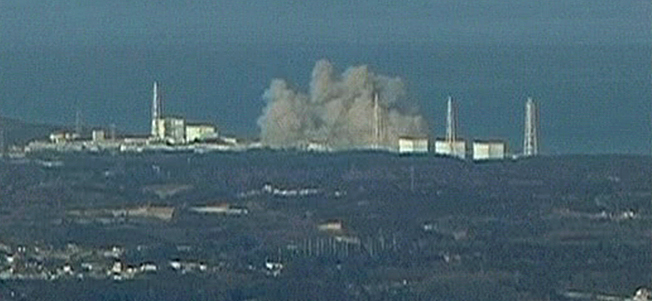General Discussion
Related: Editorials & Other Articles, Issue Forums, Alliance Forums, Region ForumsFukushima: Return To The Disaster Zone
http://www.independent.co.uk/news/world/asia/fukushima-return-to-the-disaster-zone-7237419.htmlIn an exclusive dispatch from the reactors, David McNeill becomes the first European journalist to revisit Japan's ground zero.
Life has frozen in time. Weeds reclaim the gardens of empty homes along a route that emptied on a bitterly cold night almost a year ago. Shop signs hang unrepaired from the huge quake that rattled this area on 11 March, triggering the meltdown of three reactors and a series of explosions that showered the area with contamination. Cars wait outside supermarkets where their owners left them in Tomioka, Okuma and Futaba – once neat, bustling towns. Even birds have deserted this area, if recent research is to be believed.
As our bus drives past the building, the beeping dosimeters climb to 100 microsieverts an hour. But as the most badly damaged Reactor Three looms into sight, its mess of tangled metal and steel gives off a startling reading of 1,500 microsieverts. Its cargo of lethal fuel includes plutonium and the roof of the building housing the reactor was blown off in the second explosion. "It's still too dangerous for workers to enter Reactor Three," says engineer Yasuki Hibi.
Tepco officials constantly apologise. The apologies have become perfunctory and ritualised, failing to douse public anger over the scale of the disaster. Compensation has dribbled into the pockets of over 100,000 evacuees who have lost everything and are stuck in legal limbo, without homes or clear futures. In one now infamous incident, the utility argued against a compensation claim by a golf course operator, saying radioactive materials from the nuclear plant belong to individual landowners and are not the company's responsibility.
Japan's government has admitted that dismantling the reactors and its 260-ton payload of nuclear fuel will take up to 40 years. Many people believe the government and Tepco will eventually be forced to recognise that the people who fled from this plant a year ago may not return for decades.
Botany
(70,516 posts)and a large area of land will not be livable or can a crop be grown there for generations
but still we have people who push this technology with a self satisfied grin on their faces
as they tell us that we are just not smart enough to understand how safe nuclear energy
is and that we have to use it because of climate change.
thanx for posting!

PearliePoo2
(7,768 posts)Here's more from the article:
Engineers have only a rough idea of where exactly the melted fuel lies inside the damaged reactors or of its exact state.
The fuel is being kept cool by thousands of gallons of water that Tepco pumps on to it every day and which it is struggling to decontaminate.
Engineers are frantically working to build more water tanks – on a ridge about 65ft from the reactors is a field of 1,000-ton water tanks. A crew is levelling land to make way for more.
We are told to wear our full-face masks for the climax of the visit – a tour of the six reactors. Every inch of our bodies is covered and even in the sub-zero temperatures of Fukushima in February, it is unbearably hot.
Thousands of men worked through last year's summer heat of over 30C in this protective gear, struggling to clear debris and bring water to the reactors. "They were dropping like files in the heat," said one worker. "But they just had to keep going."
The worst time was when the radiation was 250 milisieverts and we couldn't find people to do the work," explains Kazuhiro Sakamoto, an onsite subcontractor.
"We could only work in two-minute bursts, when we were extracting caesium from contaminated water."
Botany
(70,516 posts)I quit following the Fukushima Daiichi about 3 months after the accident ....
the news was just to bad for me to process.

I read that a little town just a couple of miles s.w. of the city of Fukushima and outside of the containment zone
was getting a hell of dose of radiation. It has been years since of I have looked at the biological
costs of nuclear power so I don't know the newer radiation rating system but the little town was >85%
of the max daily safe dose levels.
I bet most of the workers trying to clean up the mess will die early and they know that too.

AndyTiedye
(23,500 posts)Plutonium 239 has a half-life of 24,100 years.